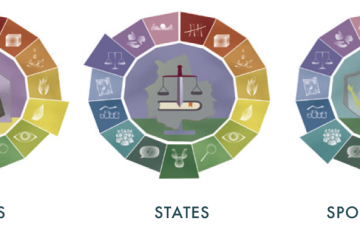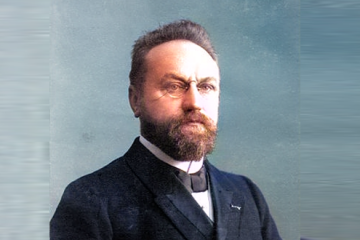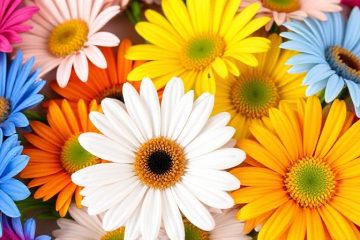In the past year, while worldwide lockdowns have been instituted for the preservation of life, many people have been forced to ponder anew what the value of it is: what, if anything, makes life ‘beautiful’? In the silence of our isolated homes, the call to find meaning—a call which has always been sounding in the background of society—has become more difficult for us to ignore.
Culture has offered a host of different answers to this question in the past year, depending on what article you read: some people point to the friendships and relationships we long to see restored, others say that the beauty of life can be found in nature (which has ironically benefitted most from our current human crisis). Interestingly, a surprising number of people have suggested that art is the answer to this persistent (and even annoying) question about life’s meaning. A quick search will reveal a dizzying number of articles pointing to the importance of art during lockdown: (virtual) museum visits have been on the rise in the past year, and many people have turned to art as a practical pursuit during lockdown (see articles below by BBC, Voices of Youth, and RSA). For us, art is an appealing answer to the question of meaning because it locates the ‘beauty’ of life within humanity (us) rather than outside of it (either in nature or in God), and it celebrates individual expression while also providing a thread of commonality across world cultures and throughout all of human history: art is simultaneously familiar to us and all-encompassing. Furthermore, art is inherently creative—reminding us of new creation and new life even while we’re surrounded by death—and it is redemptive: the article I found most interesting about arts during lockdown discusses how many people have found hope and the potential to redeem suffering through the creation of art (see the article below published by The Guardian).
Maslow’s Hierarchy of Needs would tell us that a pandemic which threatens our safety would drive cultural frivolities like ‘the arts’ into the shadows of irrelevance. But that hasn’t been the case. So why has a global health crisis, which has brought widespread sickness, death, and panic, made many people value art more rather than less? Quite simply, because art reflects God’s beauty, creativity, and redemptive power. As humans, we instinctively look for these qualities in a Saviour, and while art itself is impotent as an antidote to destruction and despair, it does reflect a Creator who has literally defeated death.
Art reflects God’s creation of aesthetic beauty
I was recently struck by the description of the Garden of Eden in Genesis: ‘And out of the ground the LORD God made to spring up every tree that is pleasant to the sight and good for food’ (Genesis 2:9a, ESV). God cared about aesthetics from the beginning: He ordained beauty. Beauty was a part of his design for Creation and for man’s experience of it: He gave Adam material provisions in the garden (food), but in his abundant generosity, God was also pleased to give him aesthetic beauty and the faculties to appreciate it. Beauty was God’s idea and it reflects its Author.
Art reflects God’s boundless creativity
Genesis describes God creating the world literally from nothing. Humans’ creative faculties reflect God’s ultimate creative powers: we can’t form a canvas and paint from nothing, but we can take them and make them more beautiful than they were before. The artistic process is inherently creative, reflecting God’s own unimaginable powers of creation and fulfilling His plan for us to partner with him in the cultivation of his world.
Art reflects God’s character as a redemptive God
As we’ve seen, redemption has been an important theme in reports about art during lockdown. People want to believe that good, meaningful things (like beautiful art) can come from bad, unwanted things (like pandemics and lockdowns). Fortunately, as Christians, we know that is the case. I believe humans instinctively look for redemption in brokenness because we were made in the image of a God who is committed to the renewal and recreation of His world: He will very truly ‘make all things new’ (Rev. 21:5a, ESV). God creates beautiful things from nothing, but he also chooses to create beautiful things out of horrible somethings, mysteriously working pain, loss, and corruption into a plan for restoration that only He can imagine.
It’s encouraging to hear that people have been refreshed by the delight of aesthetic beauty during the global pandemic, coming to appreciate art and creativity in new ways. But sadly, those who point to human art as a means of redeeming suffering are staring at a mirror but not seeing the image it reflects; I pray that we can look beyond art to its Creator. Art cannot save the world, but the God who makes beautiful things and restores broken things certainly will.
Further Reading
‘Art and lockdown: your drawings in the time of coronavirus’. Voices of Youth. n.d. https://www.voicesofyouth.org/blog/art-and-lockdown-your-drawings-time-coronavirus
Campbell, Paul. ‘”It gives me something to hold on to”: readers’ art in lockdown’. The Guardian. 6 July 2020. https://www.theguardian.com/artanddesign/2020/jul/06/it-gives-me-something-to-hold-on-to-readers-art-in-lockdown-coronavirus
Chatfield, Georgina. ‘Is the lockdown helping us realise the value of art and creativity?’ RSA. 16 May 2020. https://www.thersa.org/blog/2020/05/art-creativity-lockdown
Smith, Neil. ‘Arts go interactive during coronavirus lockdown’. BBC. 30 March 2020. https://www.bbc.co.uk/news/entertainment-arts-52099181
- Why do a PhD? Because God has a plan… - August 30, 2021
- Aesthetic Experience During Lockdown: Art and Hope - June 21, 2021
- A Prayer for the Year - June 22, 2020


